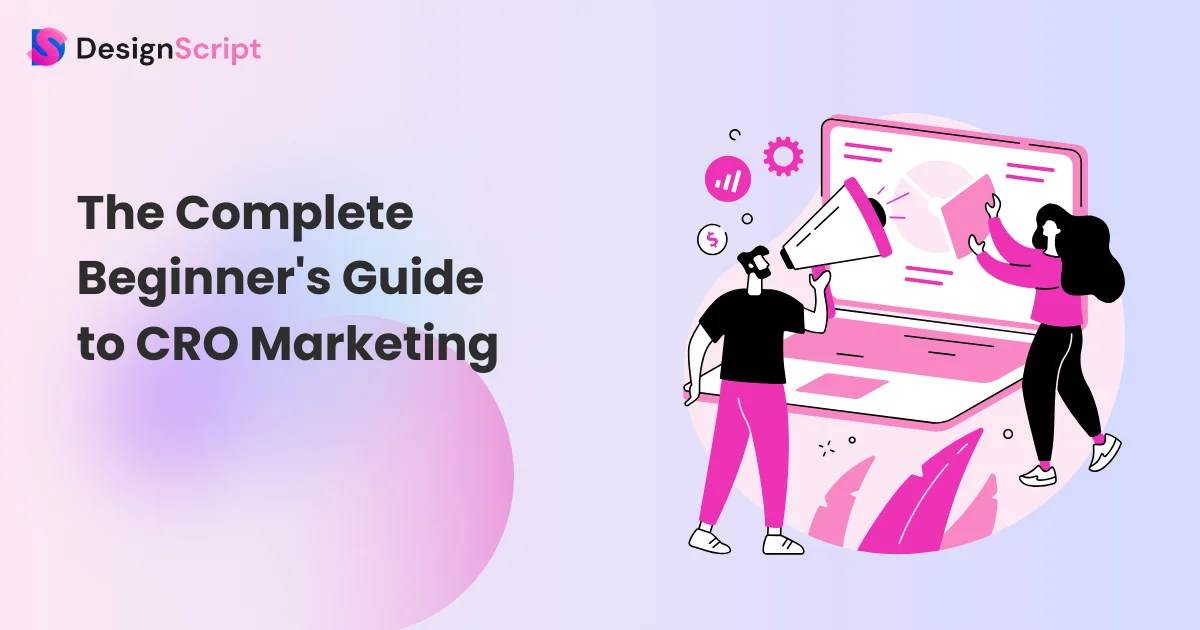The Complete Beginner’s Guide to CRO Marketing
Have you ever wondered how some websites make the visitor click that ‘Buy Now’ button? It’s not magic; it’s CRO (Conversion Rate Optimization)! Imagine you have a lemonade stand, and you want more people to buy your lemonade. CRO Marketing is like adding a secret ingredient to make your lemonade irresistible!
We’re diving into the world of CRO Marketing, where we’ll break down all those fancy words like ‘conversion rate’ and ‘digital marketing.’ In this guide, we’ll spill the beans on how to make websites more convincing.
We’ll talk about some handy tools to help websites do their best job.
So, let’s begin!
Table of Contents
- What is Conversion Rate Optimization?
- How to Calculate the Conversion Rate?
- What is CRO marketing?
- Why is CRO Important?
- What is the CRO Process?
- How to Develop a CRO Marketing Strategy?
- What are CRO’s Marketing Goals?
- CRO vs. SEO: Understanding the difference
- Conversion Rate Optimization Best Practices
- The Best Conversion Rate Optimization Tools
- FAQs
What is Conversion Rate Optimization?
Conversion Rate Optimization is the systematic approach of refining and improving various aspects of a website, app, or marketing campaign to amplify the chances of visitors completing desired actions.
It delves deep into understanding user behavior, scrutinizing data, and implementing strategic changes to enhance user experiences. Through CRO, businesses analyze visitor interactions, employing techniques like A/B testing to experiment with different elements like layout, content, or call-to-action placements.
By continuously optimizing these elements based on data-driven insights, CRO aims to increase the percentage of visitors who take specific actions, such as making a purchase or subscribing to a service. The ultimate goal is not just increasing traffic but ensuring that the traffic converts into meaningful actions that drive business success.
How to Calculate the Conversion Rate?
Calculating the conversion rate is like figuring out how many people in a big crowd actually buy something. Imagine you have a little shop, and lots of people visit it. The conversion rate tells you the percentage of visitors who buy from your shop. It’s simple math!
To calculate it, you need two numbers: the number of people who bought something (let’s say 10) and the total number of visitors (maybe 100). To find the conversion rate, divide the number of buyers by the total visitors and multiply by 100 to get a percentage. In this case, ten divided by 100 equals 0.1, and when you multiply by 100, you get a 10% conversion rate.
So, if you want to improve your conversion rate, focus on making more people buy from your shop. Try different tricks and methods from CRO marketing to attract more buyers and boost your business.
What is CRO marketing?

CRO marketing revolves around the strategies and techniques used to improve the conversion rate of a website or marketing campaign. It’s focused on analyzing user behavior, testing different elements, and optimizing the overall experience to encourage visitors to take specific actions that align with business goals.
CRO marketing involves understanding the customer journey, refining aspects like design, content, and functionality, and employing data-driven approaches to enhance user interactions. Its primary aim is to maximize the effectiveness of marketing efforts by increasing the percentage of visitors who complete desired actions, such as making a purchase, signing up, or engaging with specific content, ultimately boosting conversions and driving business growth.
Why is CRO Important?
The following are the reasons why the CRO is an important aspect:
1. Generate More Revenue

CRO is dedicated to fine-tuning your website’s elements to streamline the purchasing process. By using optimized layouts, calls-to-action, and checkout processes significantly increases the likelihood of visitors completing transactions. This leads to amplified sales and revenue generation.
2. Provide More Value to Current Customers

CRO isn’t solely about attracting new customers; it’s equally about catering to the existing ones. Refining the website’s functionality, accessibility, and relevance ensures a seamless experience for returning customers. This increased ease of navigation and personalized experience fosters customer loyalty and satisfaction.
3. Improve the User Experience

CRO is centered around refining the user journey, ensuring that the website is intuitive and effortless to navigate. Implementing clear, concise navigation and user-friendly features minimizes friction in the browsing and purchasing process. This enhancement in user experience not only encourages revisits but also promotes positive word-of-mouth referrals, contributing to sustained growth.
4. Increase Brand Awareness and Affinity

CRO doesn’t just sell; it also makes your brand memorable. A smooth website experience makes visitors more likely to remember and like your brand, encouraging them to share it with others.
What is the CRO Process?
CRO Marketing is like finding the best recipe for baking cookies. Imagine you want more people to buy your cookies online. CRO helps you make your website better so more visitors become customers. Here’s how it works, step by step
Step 1: Basic Research

Basic research in CRO Marketing involves studying how people behave on your website to make it work better. You look at things like how many visitors buy something or do what you want them to do (like signing up). This helps you find ways to make your site better. Digital tools and strategies in marketing help with this study, like having a recipe to make your online business better.
In CRO Marketing, you study how visitors use your website to make it better. You check how many visitors buy things or do what you want. This helps find ways to improve the site. Digital tools and strategies help with this study, like having a recipe for your online business.
Step 2: Hypotheses

CRO Marketing focuses on brainstorming ways to make your website more appealing to visitors. It involves experimenting with changes, such as button colors or special offers, to boost the conversion rate. This process is about devising a plan and using tools and strategies to make your site more enticing, similar to adding chocolate chips to cookies for extra appeal.
Step 3: Put it to the Test

Similar to testing different ingredients in a recipe, CRO involves making changes to your website to gauge visitor preferences. By altering elements like button colors or offers, you determine what resonates best with your audience, aiming to enhance the conversion rate through smart digital marketing strategies and optimization tools.
Step 4: Analyze the Results

CRO Marketing involves evaluating the impact of changes made on your website, much like checking if adding extra chocolate chips boosts cookie sales. By using analytical tools, you track if more visitors transition into customers, aiming to improve the website to attract more potential buyers.
Step 5: Revise, Rinse, Repeat

CRO Marketing aims to continuously refine your website to attract more visitors and achieve better results. It’s about optimizing your site to increase the likelihood of visitors taking desired actions, ultimately improving the conversion rate.
It’s like changing your cookie recipe. You try different things until everyone loves your cookies. In CRO, you test ideas to see what works best for your website. You might change how things look or where the buttons are. It’s all about making your website as awesome as possible so that people love it and do what you want them to do. And that’s what CRO Marketing is all about!
How to Develop a CRO Marketing Strategy?
Let’s look at developing a CRO marketing strategy that even a beginner can understand.
1. Define Your Conversion
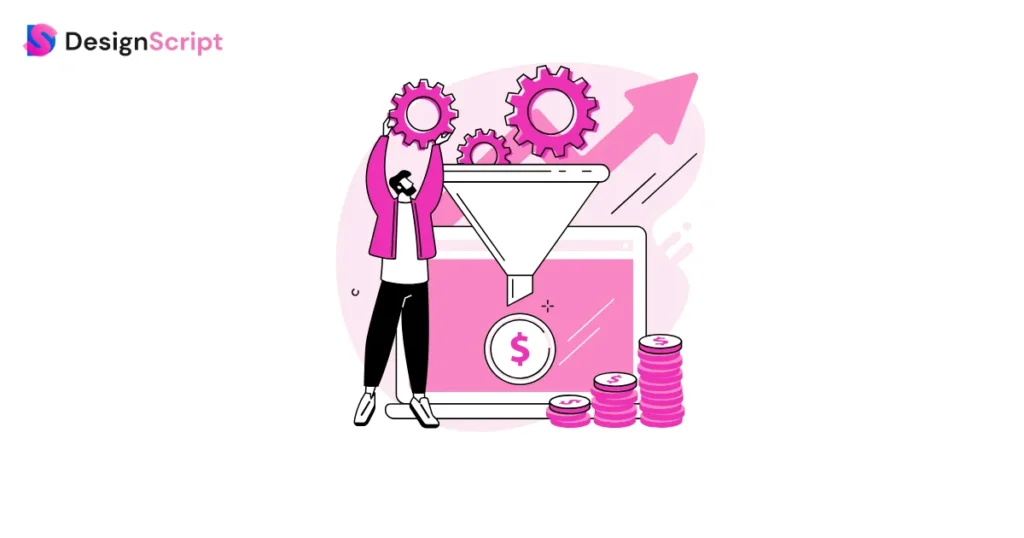
CRO marketing is all about making your website work better for you. Imagine your website as a store, and the visitors are like customers in the store. The goal is to make these visitors take action, like buying something or signing up. We call this action a “conversion.” To improve your website’s performance, you need to focus on understanding what you want people to do on your site, like making a purchase or filling out a form. Conversion Rate Optimization is like fine-tuning your store layout to make customers more likely to buy. It involves using smart strategies and tools to calculate and improve conversion rates. By mastering CRO marketing, you can boost your online business and make more people happy customers.
2. Prepare the Customer Journey

Preparing the customer journey involves understanding your audience, mapping the journey stages (Awareness, Consideration, Decision, and Post-Purchase), and identifying key touchpoints. Tailor experiences at each stage to meet customer needs, focusing on personalization and removing friction points. Aim for a seamless, engaging journey to boost conversions and cultivate long-term loyalty. This process, dynamic and data-driven, ensures that every interaction aligns with customer preferences, enhancing their overall experience and increasing the likelihood of successful conversions and repeat business.
3. Analyze the Current Conversion Process

CRO marketing is like being a detective for your website. Imagine your website is a store, and you want people to buy things. But, uh-oh, some people are leaving without buying! That’s not good, right? Well, CRO marketing helps you figure out why this is happening and how to fix it.
First, look at your website like a treasure hunt. See where people are getting lost. Are they leaving without buying? Are there certain pages where they say, “Hmm, this isn’t what I want”? Those are the spots that need help.
Analyzing the conversion process helps you find these spots and make them better. It’s just like magic, but it’s really just smart thinking and understanding what your customers want. So, put on your detective hat and start improving your website with CRO marketing.
4. Perform A/B Testing

You would obviously want to make more people do what you desire on your website. One way to do it is by using A/B testing. Imagine your website as a cake. A/B testing is like baking two cakes with different recipes to see which one people like more. Simple things like changing button colors or words can make a big difference. It’s all about finding what works best to get more people to click, buy, and enjoy your website.
What are CRO’s Marketing Goals?

CRO marketing is all about making a website or online store better so that more visitors actually do what the website owner wants them to do. It’s like making your favorite game easier to play so more people can win.
The main goal of CRO marketing is to increase your conversion rate. Imagine you have a lemonade stand. If 100 people pass by and 10 of them buy lemonade, your conversion rate is 10%. CRO marketing helps you make changes to your website so that more out of those 100 people buy lemonade, increasing your conversion rate.
To achieve this, CRO marketing uses digital marketing tools and strategies. These are like special tricks and techniques to attract more customers. Think of it as using colorful signs and yummy smells to get more people to your lemonade stand.
CRO marketing also involves understanding the journey customers take when they decide to buy something. We call this the “conversion process.” By figuring out where people usually stop or leave without buying, CRO marketing helps in finding ways to make them stay and purchase.
CRO vs. SEO: Understanding the difference
By now, you know how other businesses make their websites super effective. They use both CRO Marketing and SEO.
CRO Marketing helps websites turn their visitors into happy customers. It’s all about making sure more people who visit a website end up doing what the website owner wants them to do – like buying something, signing up, or clicking a button.
Now, let’s talk about SEO. SEO stands for Search Engine Optimization. SEO helps search engines (like Google) can easily find your website. When someone searches for something online, SEO helps your website get visibility in the search results. So, SEO is all about getting more people to know that your website exists!
CRO Marketing is like making sure the people who come to your cookie store end up buying cookies, and maybe even more than they planned to. It’s about convincing them that your cookies are the best!
SEO is like putting up big signs on the road, showing the way to your cookie store. It helps people find your store and come in.
Conversion Rate Optimization Best Practices
The following are some best practices of CRO
1. Make Changes Based on Data

Collect comprehensive data through tools like Google Analytics and heatmaps, and understanding user behavior and feedback. Analyzing this data reveals patterns and friction points, guiding hypotheses for improvement. Implementing changes is then tested through methods like A/B testing. This data-driven approach ensures changes are grounded in real user experiences, optimizing for better engagement and conversion rates. Continuous monitoring and iteration of these changes help refine strategies, creating a cycle of improvement that keeps the website aligned with user needs and preferences.
2. Check Out Your Competitors

If you’re into CRO marketing, you must check out what other competitor websites are up to! They might have super cool tricks you can use to make your site way better and grab more attention for your stuff.
This practice allows you to observe and learn from their successes and mistakes. Look at how competitors design their webpages, their user interface, call-to-action prompts, content strategies, and overall user experience. Pay attention to their unique features, promotional tactics, and customer engagement methods. Understanding their approach can inspire innovative ideas for your own website, helping you to differentiate and potentially uncover effective tactics they employ.
3. Define Clear Goals

When it comes to CRO marketing, the main thing to think about is what you want visitors to do on your website. Do you want them to buy stuff, join your site, or just click on certain things? Setting clear goals like these is super important because it helps you know what to concentrate on, allowing you to tailor your website design, content, and user pathways to achieve these objectives. They also serve as benchmarks for measuring the success of your CRO efforts. By clearly defining what you want your visitors to do, you can create a more targeted and effective user experience that drives desired actions.
4. Know Your Users

Deeply understanding your audience is essential to optimize their experience effectively. This involves researching and creating detailed user personas, which represent your typical customers. These personas should include demographic details, behaviors, preferences, and pain points. Utilize tools like surveys, user interviews, and website analytics to gather insights into what drives your users, what barriers they face, and what they value. This knowledge allows you to tailor your website’s design, content, and navigation to meet their specific needs and preferences. Knowing your users leads to a more personalized, engaging user experience, significantly boosting the likelihood of conversions.
5. Perform A/B and Multivariate Testing

A/B testing is like trying on different outfits to see which one looks better, but here, it’s about trying different website versions. Multivariate testing is a bit like experimenting with various ingredients in a recipe to find the perfect blend. These tools help figure out what makes customers click ‘buy’ more often, boosting your sales recipe!
6. Organize Before You Start Testing

Before diving into testing, it’s crucial to create a solid plan, much like plotting a game strategy. Define what aspects of your website you’ll test—such as button variations or color changes—and establish how you’ll measure success, typically through the conversion rate. Just as in games, there are tools and tactics akin to secret weapons that enhance your chances. Tracking your conversion rate gauges your progress, and there are resources available to refine your approach. So, like preparing for a game, crafting a clear plan before altering your website ensures you understand your objectives and boosts your success in the digital realm..
7. Run tests several times

Don’t stop at just one test – keep testing, testing, and testing some more! The more tests you do, the more you learn about what makes your website great for visitors. It’s like trying different ingredients in your cake until it tastes just right.
By using smart strategies, you can make your website a conversion rate optimization superstar. So, remember to keep testing and tweaking to make your website the yummiest treat for your visitors.
The Best Conversion Rate Optimization Tools
Here is a list of the five best CRO tools
1. Google Analytics
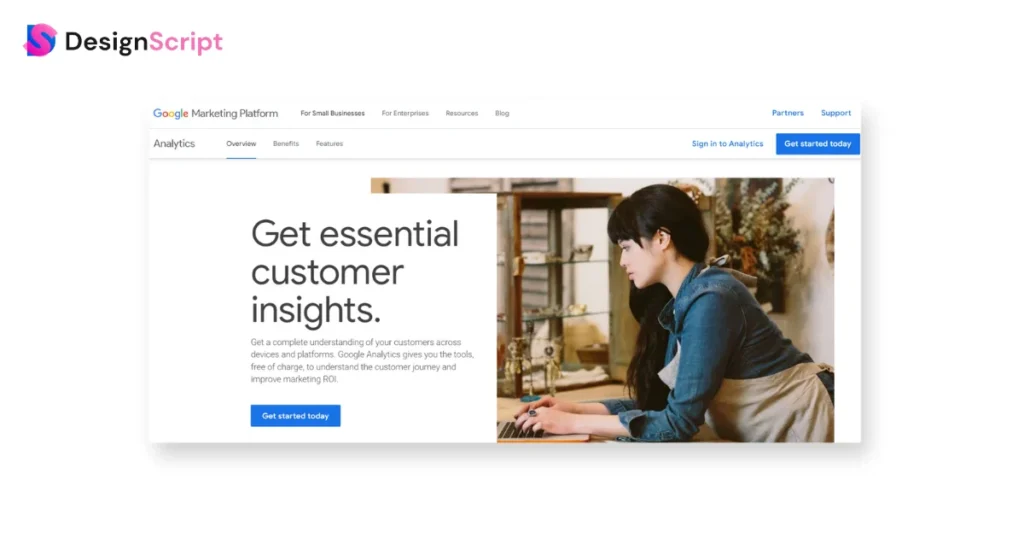
Google Analytics is like a smart tool that helps you understand everything happening on your website. It keeps track of how many people come to visit and what they do when they’re there. It’s like having a special counter that not only counts how many visitors you get but also shows what pages they look at, how long they stay, and if they buy anything. This tool gives you a clear picture of your website’s performance, sort of like a report card. It tells you which parts are popular and where people might need clarification or leave. With this information, you can make changes to your site to make it better so more visitors stick around and do what you want them to, like buying your products or signing up.
2. Optimizely
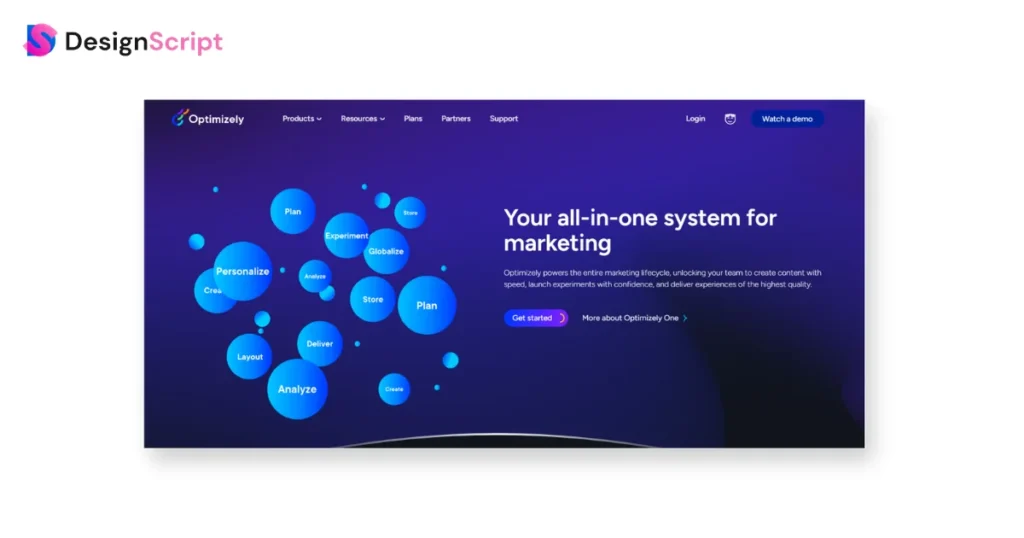
Optimizely is like a big playground where you can try out different things on your website. Imagine you have a magical tool that lets you change how your website looks, like the colors or buttons, without any hassle. That’s what Optimizely does! It’s super easy to use. You can play around with your site, making it look different for some visitors to see what they like best. Then, it helps you see if these changes make more people buy things from your store or sign up for newsletters. It’s like being a scientist in a lab, testing out different recipes to see which one tastes the best. With Optimizely, you get to play and find the perfect mix that makes visitors love your website even more!
3. Crazy Egg
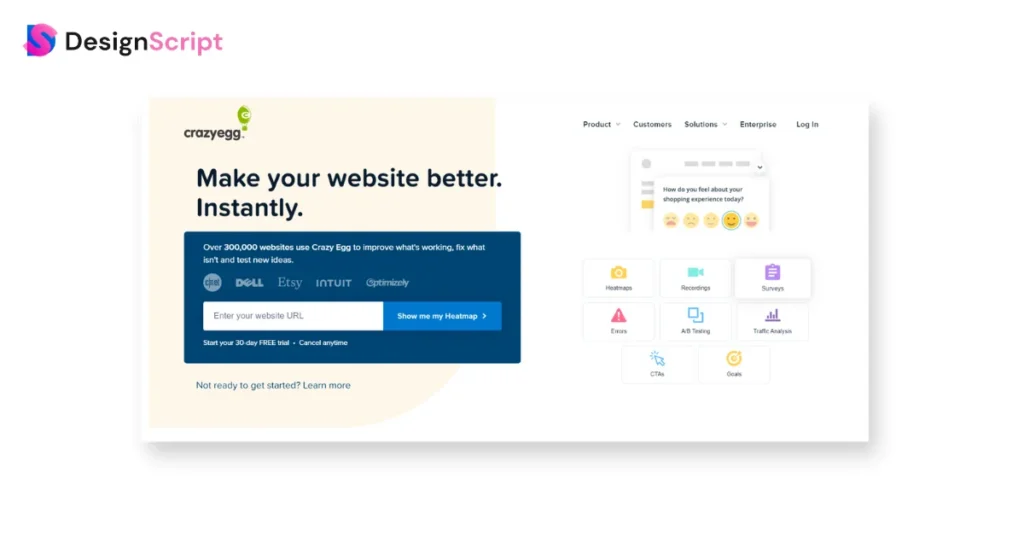
Imagine your website as a map, and Crazy Egg is like a special tool that paints this map to show where everyone stops and looks. It creates colorful heatmaps that act like highlights, offering the hottest spots where people click the most. Just like when you see lots of footprints on a path in a park, these heat maps reveal the most popular places on your website. They help you know which buttons or links catch visitors’ attention the most, making it easy to see where people are really interested. It’s like a treasure map marking the spots where everyone searches for the hidden gems on your site. With this information, you can make those areas even better and guide visitors to the right places.
4. Hotjar
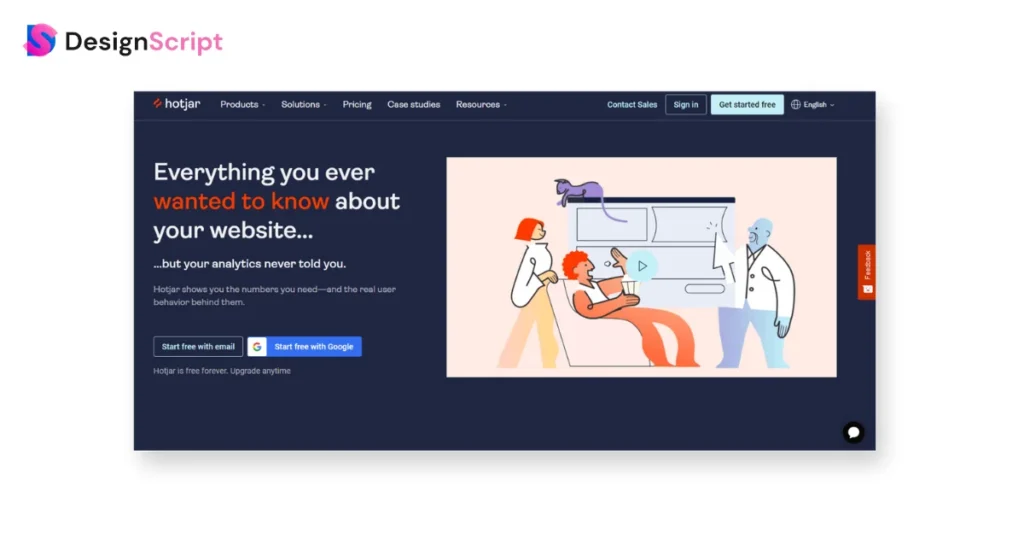
Hotjar is like a special camera for your website, but instead of taking pictures, it records how people move and act there. It captures what visitors do, like where they click or scroll, and makes colorful maps to show the most popular spots. It’s a treasure map marking where people find the most interesting things. Imagine you could watch a movie of someone exploring your website—that’s what Hotjar does with session recordings. It also asks visitors questions through surveys, like requesting their opinions. All these tricks help you understand how people use your site, like if they easily find what they’re looking for or get confused. It’s like having a secret spy to help make your website better for everyone.
5. Unbounce
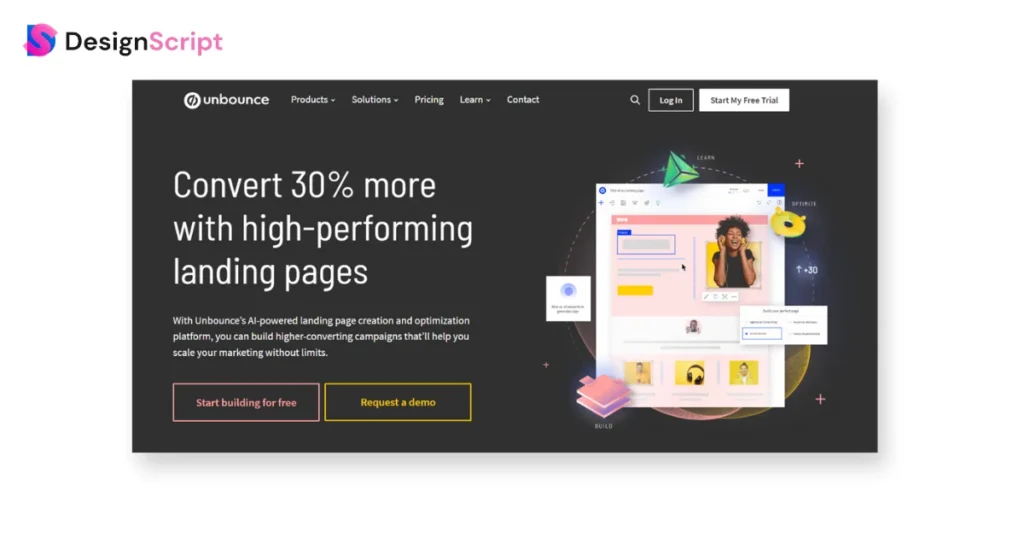
Unbounce is like a super handy toolkit for your website. Imagine you want to add things that make people want to buy your stuff, like buttons that say “Buy Now” or forms where they can sign up. But you’re not a tech wizard. That’s where Unbounce swoops in! It’s so easy to use – you don’t need coding skills. You pick what you want, like a button or a form, and just drag it onto your site. It’s like putting stickers on a notebook! Plus, you can make these elements look really cool and enticing. Unbounce helps make your site more appealing to visitors without needing fancy tech tricks. It’s like having a magic tool that lets you jazz up your website and make people want to click and buy.
Elevate ROI with CRO marketing!
CRO Marketing is like adding a special ingredient to your website, making it super awesome for visitors. Well, it helps you earn more money, makes your current customers happier, and ensures new visitors find what they want easily.
To do this, you need a plan, just like when you play a game. You figure out what you want visitors to do on your site, like buying or signing up. Then, you test different ideas, like changing colors or buttons, to see what works best. And here’s the secret: keep testing and improving, just like trying other ingredients in a recipe, until your website becomes a super tasty treat for everyone.
Don’t forget to thank us when conversions increase.
Happy Converting!
FAQs
Improve conversion rates by optimizing website design, making clear call-to-action buttons, enhancing user experience, and testing different elements. Use CRO tools to identify what works best for visitors.
Analyze conversion optimization by studying user behavior, testing variations with A/B tests, and using CRO tools to track clicks, scrolls, and interactions. Monitor changes’ impact on conversion rates to refine strategies.
Measure conversion rates by dividing the number of conversions (e.g., purchases) by total visitors and multiplying by 100 to get a percentage. CRO tools like Google Analytics provide detailed insights for accurate measurements.

